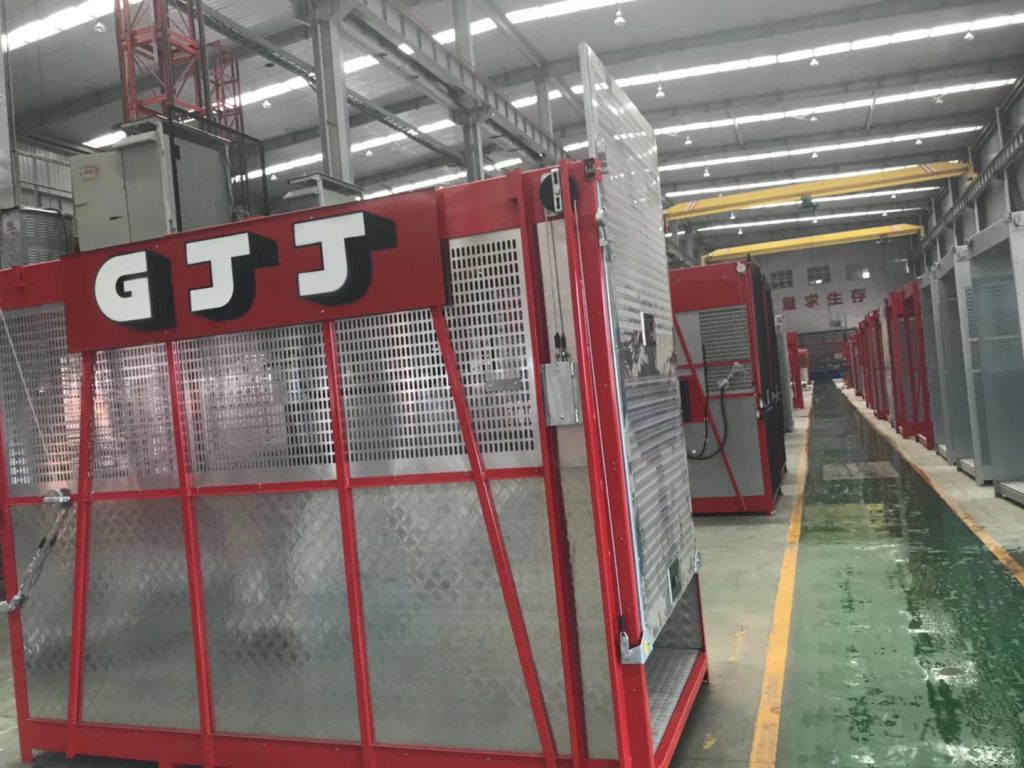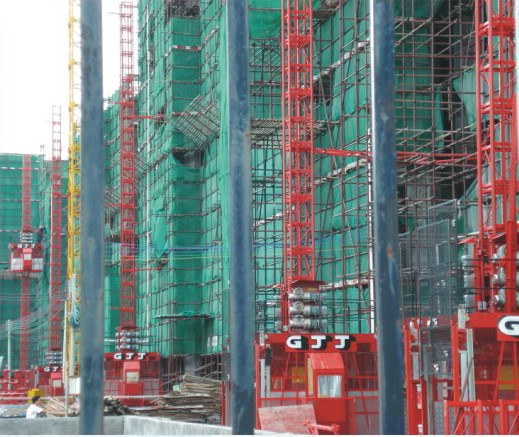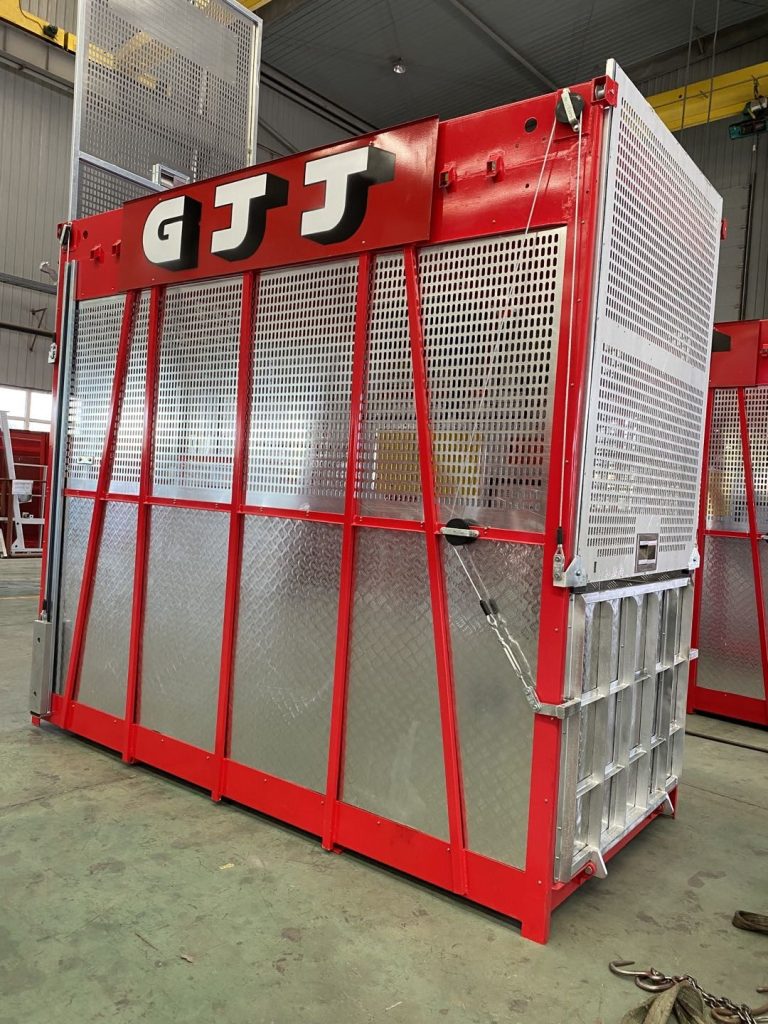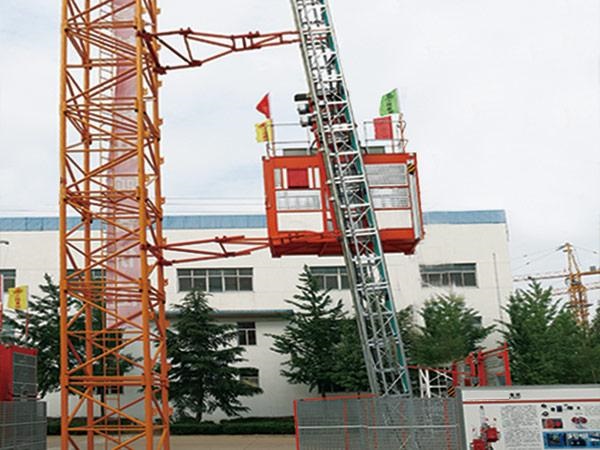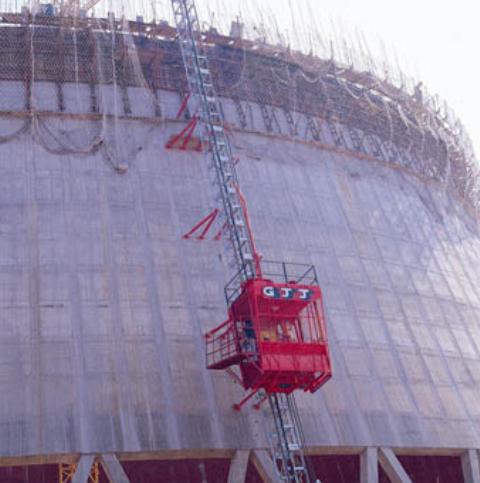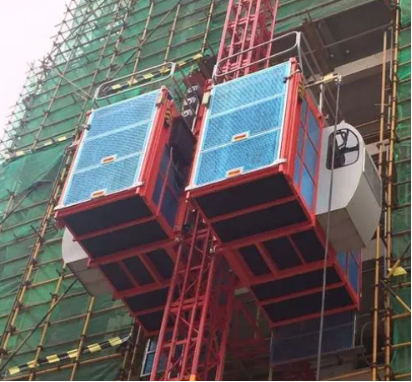On a construction site, the hoist is like a vertical elevator—it lifts people, tools, and materials safely to where they’re needed. It runs constantly, often in tough conditions. And like any hardworking machine, it can show signs of wear before something goes seriously wrong.
Knowing how to spot early warning signs can save you time, money, and most importantly, prevent accidents.
This guide walks you through the common signs of trouble, what they usually mean, and how you can fix them before they turn into bigger issues.
What Parts of a Hoist Can Go Wrong?
A construction hoist is made up of several systems that all need to work together smoothly:
- Lifting System (motor, gearbox, drum): Powers the hoist up and down
- Braking System: Ensures it can stop safely and hold position
- Wire Rope System: Connects the cage to the drum—literally the lifeline
- Electrical Controls: Panels, wiring, switches, and safety interlocks
- Structure: Tower, guide rails, connectors—keeps everything aligned and stable
- Safety Devices: Limit switches, overload protection, emergency brakes
What Are the Signs That a Construction Hoist Needs Repair?
When one system starts failing, you’ll usually see, hear, or feel something isn’t right. Below is a table of common symptoms, what they likely mean, and what you should do about them.
| What You Notice | What It Might Mean | What You Should Do |
| Hard to start or shakes when starting | Motor or gearbox issue, poor lubrication | Stop and inspect for overheating or wear; repair or replace as needed |
| Loud banging or humming during lifting | Loose or worn brake or components | Speed varies, or motion is jerky |
| Frayed or rusty wire ropes | Rope aging or near failure | Replace immediately if strands are broken or rusted |
| Cage slowly drops after stopping | Check bolts and rail brackets, and reinforce if necessary | Stop use, inspect brakes for wear or delay |
| Cage sways during lifting | Loose guide rail, worn structural connectors | Check brake pads, tighten connections, and replace if worn |
| Floor buttons don’t respond | Electrical contact issue, broken panel | Check terminals and wiring; replace damaged switches |
| Frequent power trips or shutoffs | Overloaded motor, electrical short | Inspect motor, wiring, and load conditions |
| Limit switches are not working or the overload is allowed | Uneven rope tension, cable jumping grooves | Rewind ropes, check pulleys and tension systems |
| Rewind ropes, check pulleys, and tension systems | Safety devices failing | Test and repair safety devices; must be done by a technician |
| Visible swaying between towers | Loose bolts, base settling, misaligned rails | Realign and tighten structural elements |
When to Stop the Construction Hoist Immediately
Some issues might seem minor, but they’re red flags for serious problems. Shut down immediately if you notice:
- Frayed, corroded, or broken wire ropes
- Brake failure or slipping cage
- Frequent circuit breaker trips
- Safety limits not triggering, or overload not detected
Listen, Look, Smell, Ask — Your Construction Hoist Is Talking
You don’t have to be a mechanic to notice when something’s off. A few minutes of attention each day can catch small problems before they become major ones:
- Look for cracks, rust, or unusual movement
- Listen for grinding, banging, or humming
- Smell for burning or overheating components
- Ask the operators if anything feels strange or has changed
Don’t underestimate everyday observations—they can be just as valuable as a professional inspection. Make it a habit to perform daily or weekly checks. Most equipment failures don’t happen out of the blue—they often give you early warning signs. Catching these signs early can prevent serious accidents and costly downtime.
Common Signs, What They Mean, and What to Do
| Symptom | System | What It Means | Action |
| Jerky movement, noise | Lifting mechanism | Gear or motor issue | Corrosion, loose bolts, and overuse |
| Slow response or power trips | Electrical system | Wiring or control panel fault | Test wiring, avoid overloading |
| Long stopping distance | Brake system | Inspect, lubricate, and repair if worn | Replace pads, check fluid |
| Visible cracks, rust, loose parts | Structural | Top off fluid, fix leaks, bleed the system | Tighten bolts, treat rust |
| Frayed or loose rope | Wire rope | Cable wear or misalignment | Replace the rope, align the pulleys |
| Alarms not working | Safety devices | Faulty sensors or switches | Test & replace sensors, recalibrate |
| Fluid leaks, whining sounds | Hydraulic system | Low fluid or air in lines | Low fluid or air in the lines |
Spotting and addressing hoist issues early keeps your team safe and your project on schedule. Make inspections part of your routine. Know the signs. Fix them fast.
When in doubt, bring in a certified technician—especially for electrical, structural, or brake issues.
Construction Hoist for Sale
From the time of our founding in 2006, CPTC – Chongqing Clipper Industry Co., Ltd. Of China has focused exclusively on the Construction engineering equipment and spare parts. Including complete construction hoist, tower crane, gondola and spare parts. We are supplying spare parts of GJJ, ZENIT, HERCULES, ORBIT, CREDO, LIFTEC, VERTILIFT, A.T.L., BAODA, ZOOMLION, XCMG, SANY and so on. Our products including, GEAR RACK, PINON, SAFETY DEVICE, MOTOR, GEARBOX, ROLLER, MASTER SECTION, TIE IN, CABLE, LIMIT SWITCH, FIXING AGNLE, BOLT, SLEWING RING, INVERTER…. We have developed a unique expertise and knowledge of our products. Our technical knowledge and foundational support, combined with the high quality of our product, has made CPTC one of the most successful in the construction equipment industry.

